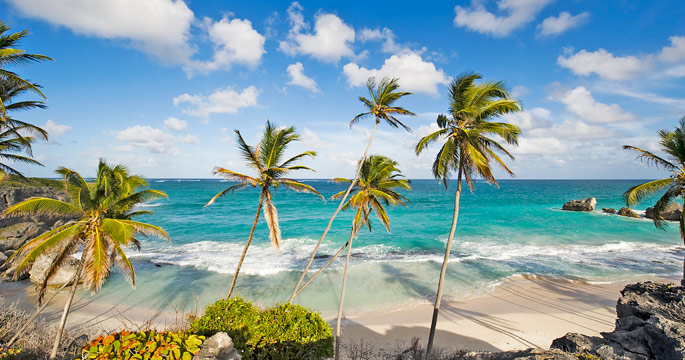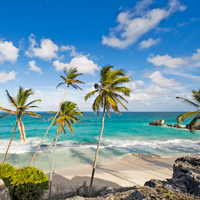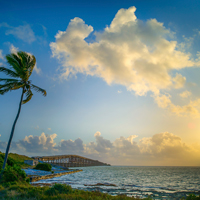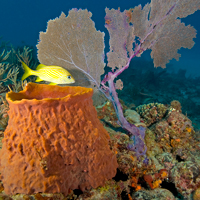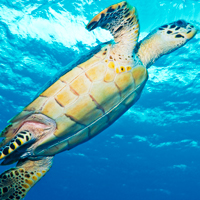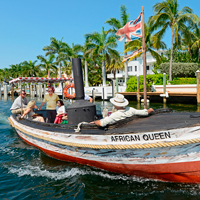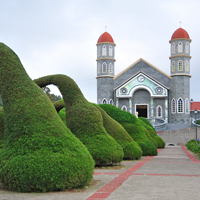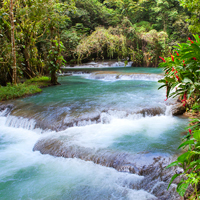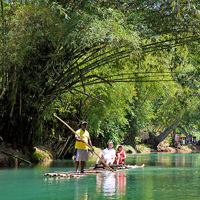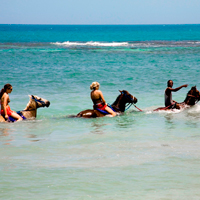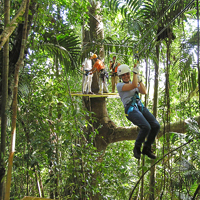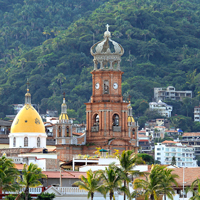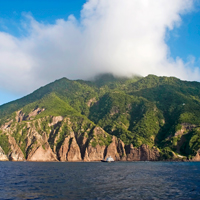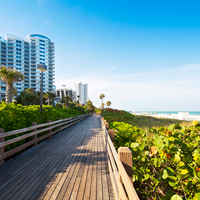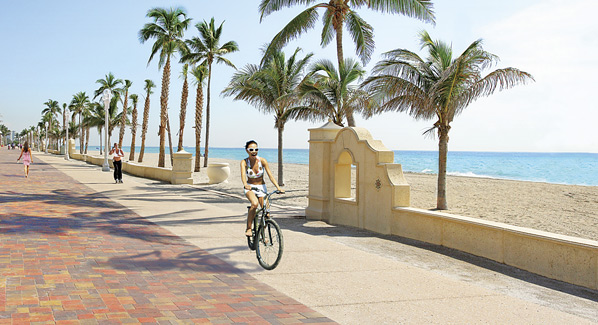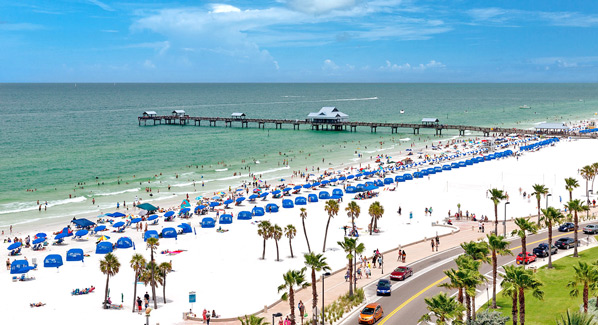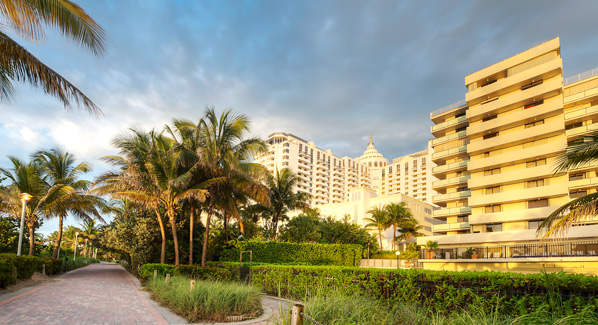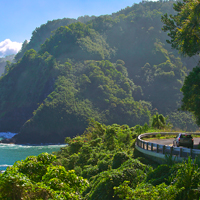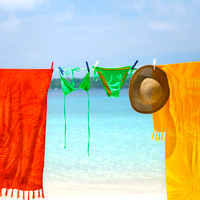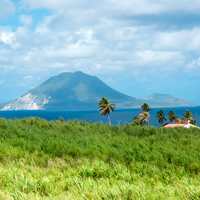There are some items that will appear on almost every vacationer’s to-do list for Maui: A boat trip to Molokini, a road trip to Hana, a visit to the summit of Mount Haleakala. But that should just be the beginning. There are dozens more interesting and exciting adventures awaiting on the Valley Isle. Here are a few of our favorites.
1 Fly in a Chopper
You’ve probably wanted to do this ever since seeing those Magnum P.I. reruns. Hopping aboard a helicopter is the best way to see all of Maui’s scenic wonders in the course of a couple hours. Highlights include overflights of the West Maui Mountains, Haleakala’s inner crater, the east shore and a quick trip across to Molokai to cruise along the world’s tallest sea cliffs.
2 Snorkel with a Sea Turtle

Sea turtles are common sights along Maui’s west coast beaches and reefs. Photo: iStock
Sea turtles are protected in Hawaiian waters, and they are quite commonly found on nearshore reefs along Maui’s calm western shoreline. One of the best places to swim with a turtle is at Maluaka Beach, which has been given the local name of “turtle town.” Other prime turtle watching sites include Kaanapali Beach and Kahekili Beach Park, which has bathrooms, showers and easy parking. If you’d prefer a boat ride, several tour companies offer snorkel trips to the area. Turtles can be gregarious, and may approach snorkelers, but they should never be pursued or harassed.
<b>
3 Discover a Deserted Beach
If you’ve made the pilgrimage to Hana, and want to stretch your legs a bit before starting the return drive, ask for directions to Kaihalulu, aka Red Sand Beach. It’s close to town, but usually uncrowded and sometimes deserted, thanks to the effort required to get there: a ten-minute hike along a trail that leads you across a wooded headland and down a somewhat steep slope. Bring sturdy shoes for the walk, any food or water you may need, and a camera to capture the amazing views.
4 See The Stars

Mount Haleakala is a perfect place for stargazing. Photo: Brad Scott/iStock
For a different take on nightlife, sign up for a stargazing experience. Plan on making an evening of it, as the adventure begins when you meet up with a guide on the lower slopes of Mount Haleakala at the Kula Lodge. From there you will drive to an altitude of 6,500 feet on the mountain’s slope, far above the lights of coastal resorts and towns. Your guide will provide a powerful ten to 12-inch telescope, and give you pointers on what to look for in the night sky, including planets, galaxies, nebulae, constellations, and close ups of the moon.
<b>
5 Sample the Wine
Yes, they do grow grapes on Maui, and at Maui’s Winery at Ulupalakua Ranch, the harvest is transformed into reds, whites and rosé. For something truly different, try one of their pineapple wines. The winery is located in the western slopes of Mount Haleakala, and getting there is half the fun, as you’ll encounter miles of scenic vistas of sky, sea and open range as you circumnavigate the lower half of the island on Highway 37.
6 Get Close to A Whale
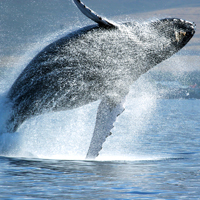
Each winter, humpback whales return to Maui’s northwest coast. Photo: iStock
Throughout the winter months, whale watching is one of the most popular activities on Maui. A number of tour boats carry passengers to sea, maintaining prescribed distances to avoid disturbing the big mammals as they go about their business. Because much of this activity takes place close to shore, and on the western side of the island, where seas are calm, it’s possible to forgo the usual tour boat crowds and opt for a more up close and personal kayak adventure. Without the crowds and the engine noise, it’s possible to hear the big mammals splash and blow.
<b>
7 Explore a Tube
Lava tubes are caves created by volcanic action, and you can explore a part of Maui’s longest, Kaeleku Cave, without any special spelunking gear. This is another activity you might want to roll into a day’s drive along the west coast to Hana, as it is located about three miles north of town, directly off Highway 31. A modest admission fee gets you an orientation and a flashlight, and then you are free to delve into the underground.
8 Go Organic

Maui’s volcanic soil produces its share of succulent fruit. Photo: iStock
A wide variety of fruits and vegetables thrive in Maui’s rich volcanic soil and abundant sunlight. The island is now home to a burgeoning organic farming movement, and local produce becomes featured table fare at a number of restaurants and resort kitchens. You can also see and sample the fruits of the growers’ labors right at the source by scheduling a tour and tasting at one of several farms and orchards across the island. In addition to familiar favorites such as pineapple, mango and papaya, you can discover more exotic fruits such as lilikoi and pitaya.
<b>
9 Swim With Sharks
There’s actually no real danger involved when you enter the 750,000-gallon exhibition tank at the Maui Ocean Center, which is home to a variety of sharks. But coming face to face with species such as hammerheads, tiger and reef sharks makes for great photo ops and a great story, even if it is within a controlled environment. You’ll need to be a certified diver to participate; SCUBA gear is supplied by the aquarium.
10 Join the Party
Friday evenings bring locals and tourists out into the streets to enjoy concerts, games, street vendors and performers and food truck roundups. The action moves from town to town depending on the week, and on top of these recurring weekly gatherings, there are a number of additional public performances and festivals staged throughout the year.

